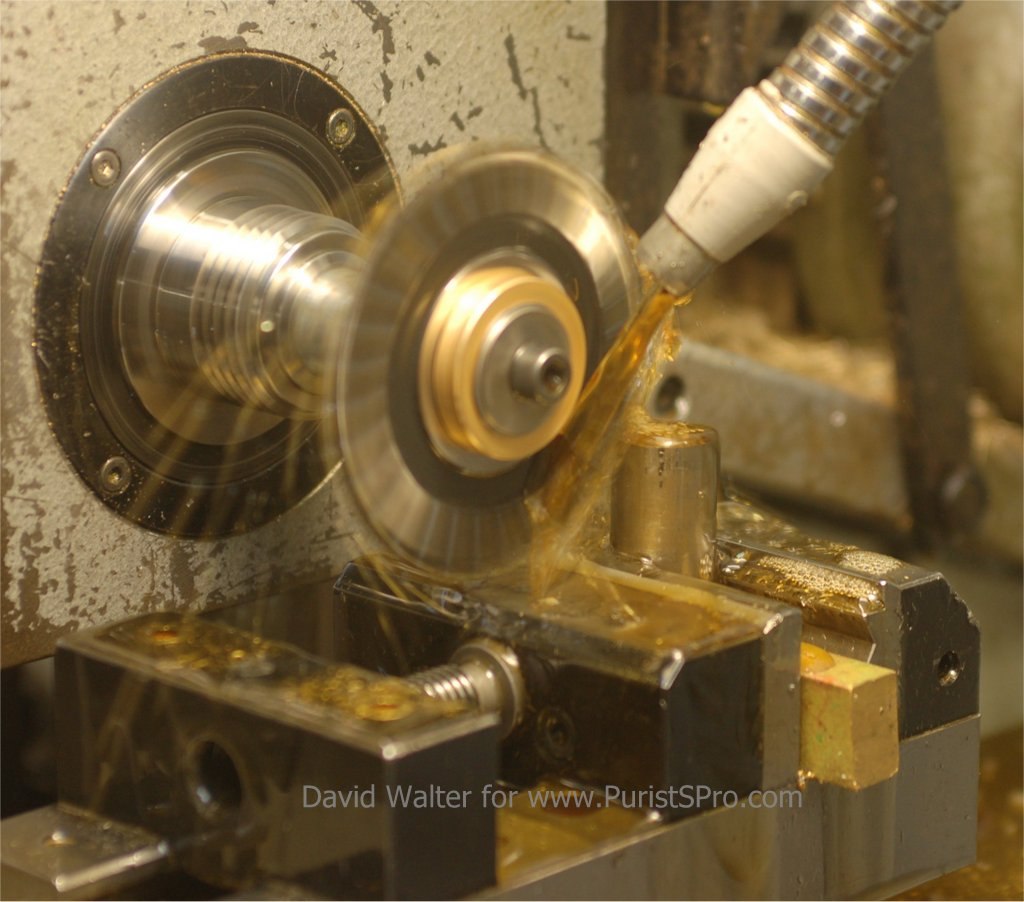
DonCorson
[AHCI]
3358

A David Walter Double Pendulum Clock – Part 4, Invar Pendulum Parts
A David Walter Double Pendulum Clock
– Part 4, Invar Pendulum Parts

David Walter's new double pendulum perpetual calendar clock is advancing every day.
For those of you who didn't see the earlier installments of this series, you can catch up by looking here:
- Installment 1 – Introduction and Cutting out the plates
- Installment 2 – Making the Barrel
- Installment 3 – The Suspension
Next we will see David machining the pendulum parts tht are made of Invar steel. Invar steel is a very special steel with a very low coefficient of thermal expansion. Invar was invented in 1896 by the Swiss physicist Charles Édouard Guillaume (born in Fluerier, Canton NE) who worked at the International Office for Weights and Measures in Paris and was looking for a less expensive material than the Platinum-Iridium alloys used at that time for the standard measures. The thermal expansion of Invar is about 10 times less than that of standard steels. Mr. Guillaume received the Nobel Prize in Physics in 1920 for his discovery of this material.
This low coefficient of thermal expansion predestined Invar also for use in clock pendulums and hairsprings. These days it is only used for parts that need to be machined as other materials, such as fused silica glass, have better long term stability and their thermal expansion can be compensated with appropriate measures. So is it here, David uses Invar for the parts connecting the pendulum rod, of fused silica glass, to the suspension and to the bob.
Invar is approx 64% iron and 36% nickel. Invar is a real beast to machine needing perfect cutting tools to get any kind of reasonable surface quality when cutting and wearing those tools very quickly. You will note that David uses flowing lubrication when cutting this material.
In the first two pictures we see the pendulum hook being drilled out and then bored to size to fit the fused silica pendulum rod.


At the other end of the piece the hook is now formed. First the piece is slotted.



And then the hook is formed by cuting an angled slot.

Cutting the blanks which will become the regulating nuts.


The blanks are step turned and then the center hole reamed to size.

Both regulating nuts are seen here in an arbor where the 30 divisions are cut. Here 27 of the 30 divisions have been cut.

A portrait of all the Invar parts used in this double pendulum clock. Notice that there are 4 hooks and 4 threaded shafts. The second set will be used for a set of spare pendulum rods delivered with the clock.

Things are advancing quickly... I'm wondering what parts we will be seeing next.

A David Walter Double Pendulum Clock – Part 4, Invar Pendulum Parts


Manu - Facture
What alloy version of Invar is being used?
